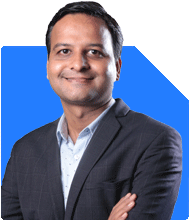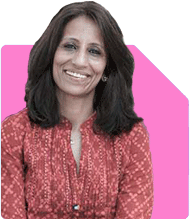Ramalingam Kalirajan |9752 Answers |Ask -Follow
Mutual Funds, Financial Planning Expert - Answered on Jun 03, 2024
He has an MBA in finance from the University of Madras and is a certified financial planner.
He is the director and chief financial planner at Holistic Investment, a Chennai-based firm that offers financial planning and wealth management advice.... more

Dear Sir, I find your suggestions very effective. This is for my son who is 31 years old and works as a Manager in a leading IT Company. His CTC is approx. Rs. 35 lakhs per annum . His wife is also working. At present they have no kids. We are a joint family and live in our own flat . He is having EMI of only Rs 13,000/- till 2025 December and want to invest about 50,000/- ( fifty thousand )per month in Mutual Fund for a long term period of 15-20 years. Can you kindly advice so that a good corpus is created by 20 years. At present they have some investment in Gold EFT & stocks. ( around 5 lakhs). Best Regards, UKM
Thank you for sharing details about your son’s financial situation. Your son’s proactive approach to investing is commendable. Creating a long-term investment strategy will help him build a substantial corpus over the next 15-20 years.
With a monthly investment of Rs 50,000, a disciplined approach will ensure he achieves his financial goals. Let’s explore the best way to allocate his investments in mutual funds for maximum growth and stability.
Evaluating Current Financial Position
Your son has a stable job with a CTC of Rs 35 lakhs per annum. His wife is also employed, and they have no children at present. They live in a joint family-owned flat, which reduces housing costs. The EMI of Rs 13,000 till December 2025 is manageable.
His current investments in Gold ETFs and stocks amount to Rs 5 lakhs. These provide some diversification and a good start.
Benefits of Mutual Fund Investments
Investing in mutual funds offers several advantages:
Professional Management: Fund managers use their expertise to select and manage a diversified portfolio.
Diversification: Mutual funds spread investments across various assets, reducing risk.
Liquidity: Mutual funds can be easily converted to cash.
Flexibility: Investors can choose from a wide range of funds to suit their risk appetite.
Disadvantages of Index Funds
Index funds track market indices and lack active management. They mirror the market’s performance, which can be limiting. Active fund managers strive to outperform the market, providing the potential for higher returns. This adaptability is particularly beneficial in volatile markets.
Benefits of Actively Managed Funds
Actively managed funds offer:
Expertise: Fund managers actively select and manage investments to outperform the market.
Risk Management: Active funds can adjust holdings based on market conditions, potentially reducing risk.
Higher Returns: With skilled management, actively managed funds often aim for superior returns.
Direct vs. Regular Mutual Funds
Direct mutual funds have lower expense ratios but require investor expertise. Regular mutual funds, managed through a Certified Financial Planner (CFP), provide professional guidance. The additional cost of regular funds is justified by the expertise and peace of mind they offer.
Creating a Balanced Portfolio
To build a robust corpus over 15-20 years, a balanced portfolio with equity and debt mutual funds is recommended. Equity funds offer growth potential, while debt funds provide stability and reduce overall risk.
Systematic Investment Plan (SIP)
A SIP in mutual funds helps in rupee cost averaging and disciplined investing. Investing Rs 50,000 per month through SIPs in diversified equity mutual funds can leverage the power of compounding.
Suggested Asset Allocation
Based on your son’s risk profile and investment horizon, the following allocation is advisable:
70% in Equity Mutual Funds: For growth potential over the long term.
30% in Debt Mutual Funds: For stability and risk mitigation.
Equity Mutual Funds
Equity mutual funds can be further diversified into:
Large-Cap Funds: Invest in well-established companies with stable returns.
Mid-Cap Funds: Offer higher growth potential but with increased volatility.
Small-Cap Funds: High growth potential with higher risk.
Sectoral/Thematic Funds: Focus on specific sectors or themes with potential for high returns.
Debt Mutual Funds
Debt mutual funds can be diversified into:
Short-Term Debt Funds: Provide liquidity and lower interest rate risk.
Corporate Bond Funds: Invest in high-rated corporate bonds for stable returns.
Government Bond Funds: Offer safety and moderate returns.
Monitoring and Rebalancing
Regular monitoring and rebalancing of the portfolio are crucial. This ensures the investments align with your son’s financial goals and risk tolerance. A CFP can provide valuable insights and make necessary adjustments.
Tax Planning
Mutual funds offer tax-efficient investment options. Equity funds held for more than one year qualify for long-term capital gains tax at 10% on gains exceeding Rs 1 lakh. Debt funds held for more than three years qualify for long-term capital gains tax at 20% with indexation benefits.
Emergency Fund
An emergency fund equivalent to six months’ expenses should be maintained. This ensures financial stability during unforeseen circumstances and prevents the need to liquidate long-term investments.
Insurance Coverage
Adequate life and health insurance coverage are essential. This protects against financial risks and ensures peace of mind.
Additional Considerations
Your son’s EMI will end in December 2025. Post-EMI, this amount can be redirected towards investments, increasing the monthly SIP amount. Regular increments in income can also be partially allocated to SIPs, accelerating corpus growth.
Summary of Action Plan
Invest Rs 50,000 per month in mutual funds via SIPs.
Allocate 70% to equity mutual funds for growth.
Allocate 30% to debt mutual funds for stability.
Regularly monitor and rebalance the portfolio with a CFP’s guidance.
Maintain an emergency fund for financial stability.
Ensure adequate insurance coverage.
By following this plan, your son can build a substantial corpus over 15-20 years, ensuring financial security and growth.
Best Regards,
K. Ramalingam, MBA, CFP
Chief Financial Planner,
www.holisticinvestment.in
You may like to see similar questions and answers below
Ulhas Joshi | Answer |Ask -Follow
Mutual Fund Expert - Answered on May 24, 2023
Ramalingam Kalirajan |9752 Answers |Ask -Follow
Mutual Funds, Financial Planning Expert - Answered on May 04, 2024
Ramalingam Kalirajan |9752 Answers |Ask -Follow
Mutual Funds, Financial Planning Expert - Answered on May 20, 2024
Ramalingam Kalirajan |9752 Answers |Ask -Follow
Mutual Funds, Financial Planning Expert - Answered on Jun 19, 2024
Ramalingam Kalirajan |9752 Answers |Ask -Follow
Mutual Funds, Financial Planning Expert - Answered on Oct 14, 2024
Nayagam P P |8896 Answers |Ask -Follow
Career Counsellor - Answered on Jul 16, 2025
Shalini Singh |169 Answers |Ask -Follow
Dating Coach - Answered on Jul 16, 2025
Dr Nagarajan J S K |1800 Answers |Ask -Follow
NEET, Medical, Pharmacy Careers - Answered on Jul 16, 2025
Dr Nagarajan J S K |1800 Answers |Ask -Follow
NEET, Medical, Pharmacy Careers - Answered on Jul 16, 2025
Dr Nagarajan J S K |1800 Answers |Ask -Follow
NEET, Medical, Pharmacy Careers - Answered on Jul 16, 2025
Dr Nagarajan J S K |1800 Answers |Ask -Follow
NEET, Medical, Pharmacy Careers - Answered on Jul 16, 2025
Nayagam P P |8896 Answers |Ask -Follow
Career Counsellor - Answered on Jul 16, 2025
Dr Nagarajan J S K |1800 Answers |Ask -Follow
NEET, Medical, Pharmacy Careers - Answered on Jul 16, 2025
Anu Krishna |1647 Answers |Ask -Follow
Relationships Expert, Mind Coach - Answered on Jul 16, 2025
Dr Nagarajan J S K |1800 Answers |Ask -Follow
NEET, Medical, Pharmacy Careers - Answered on Jul 16, 2025

























